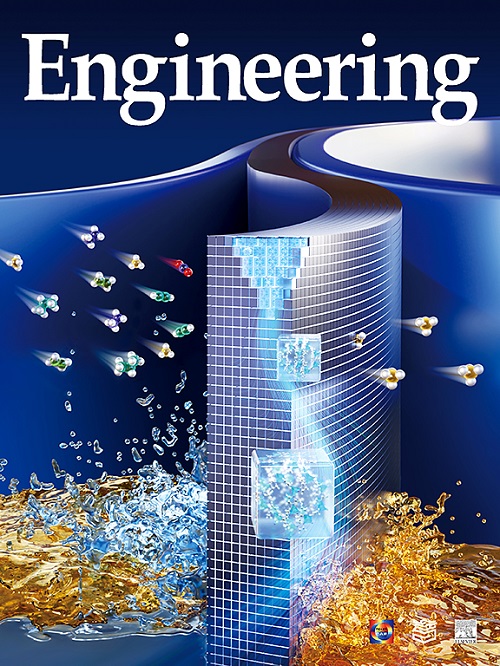膜生物反应器处理废水的技术经济及环境影响评价综述
IF 10.1
1区 工程技术
Q1 ENGINEERING, MULTIDISCIPLINARY
引用次数: 0
摘要
膜生物反应器(MBR)具有出水水质高、占地面积小等优点,但由于能耗大、膜污染严重,其可持续发展面临挑战。权衡mbr的利弊需要从技术-经济-环境角度进行综合评估。本文从经济成本分析、环境影响评价和技术经济环境综合评价三个方面对mbr的相关研究进行了综述。本文旨在了解mbr的可持续发展性能,并对多种技术经济环境评价方法在污水处理领域的应用现状进行综述。现有的mbr经济成本分析结果表明,如果不考虑mbr潜在的小足迹效益,mbr的运行成本和能耗高于其他废水处理工艺。环境影响评价结果表明,尽管全球变暖潜势在一定程度上限制了mbr的可持续性,但mbr的出水质量高,对环境具有积极影响。技术-经济-环境综合评价表明,mbr具有经济可行性和技术效率,但其可持续性存在争议。鉴于MBR技术的快速发展,这些结果可能会随着新的进展而演变。此外,现有文献在结果的可靠性和可比性以及方法的适用性方面还有改进的余地,特别是在确定会计范围、澄清模型假设和考虑贴现方面。本文章由计算机程序翻译,如有差异,请以英文原文为准。
Techno–Economic and Environmental Impact Assessment of Membrane Bioreactors for Wastewater Treatment: A Review
Despite the advantages of high effluent quality and small footprint, membrane bioreactor (MBR) technology faces challenges in sustainable development due to energy consumption and membrane fouling. Weighing the advantages and disadvantages of MBRs requires a comprehensive assessment from techno–economic–environmental perspectives. In this paper, we reviewed the related research on MBRs from three aspects: economic cost analysis, environmental impact assessment, and comprehensive techno–economic–environmental assessment. The aim of this paper is to understand the sustainable development performance of MBRs, and to review the current status of the application of multiple techno–economic–environmental assessment methods in the field of wastewater treatment. The currently available results of the economic cost analysis of MBRs showed that the operating cost and energy consumption of MBRs are higher than those of other wastewater treatment processes if MBRs’ potential benefit of smaller footprint is not taken into account. The results of the environmental impact assessment showed that MBRs have a positive environmental impact due to high quality effluent, although global warming potential limits the sustainability of MBRs to some extent. Combined techno–economic–environmental assessment showed that MBRs are economically feasible and technically efficient, while their sustainability is controversial. Given the rapid development of MBR technology, these results may evolve as new advancements are made. In addition, there is room for improvement in the existing literature regarding the reliability and comparability of results, as well as the applicability of the methods, particularly in defining the accounting scope, clarifying model assumptions, and considering discounting.
求助全文
通过发布文献求助,成功后即可免费获取论文全文。
去求助
来源期刊

Engineering
Environmental Science-Environmental Engineering
自引率
1.60%
发文量
335
审稿时长
35 days
期刊介绍:
Engineering, an international open-access journal initiated by the Chinese Academy of Engineering (CAE) in 2015, serves as a distinguished platform for disseminating cutting-edge advancements in engineering R&D, sharing major research outputs, and highlighting key achievements worldwide. The journal's objectives encompass reporting progress in engineering science, fostering discussions on hot topics, addressing areas of interest, challenges, and prospects in engineering development, while considering human and environmental well-being and ethics in engineering. It aims to inspire breakthroughs and innovations with profound economic and social significance, propelling them to advanced international standards and transforming them into a new productive force. Ultimately, this endeavor seeks to bring about positive changes globally, benefit humanity, and shape a new future.
 求助内容:
求助内容: 应助结果提醒方式:
应助结果提醒方式:


